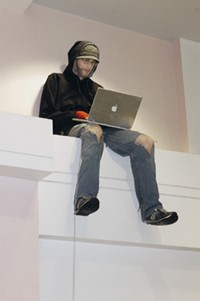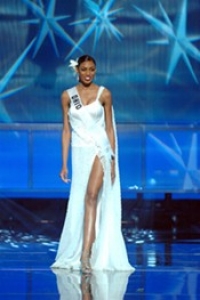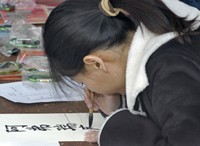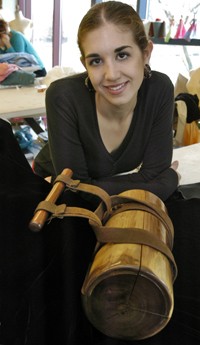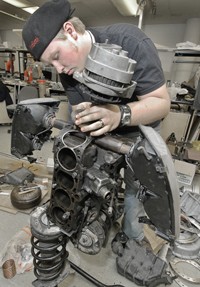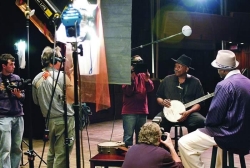DAAP's tireless student
Students frequently surprise faculty, but when planning professor Jay Chatterjee yelled at a student to climb down from the Aronoff Center's ledge in the main entryway, the young man's total disregard was less shocking than the realization that the student was only a work of art.
Urban planning senior Alan Marrero created a life-sized replica of himself for an "Installation Art" course and placed it in the busy hallway, where many staff and students embarrassingly tried to strike up conversations with the mannequin. Dean Judith Koroscik was so impressed with the work, named Ethan, that she obtained the piece for permanent display and added it to the University of Cincinnati Fine Arts Collection.
"His assignment was to create a site-specific installation that reflects the site's culture," the dean says. "He was incredibly successful in representing the way our students make their home in our building. Students are very creative in finding little niches to curl up in and use their laptops, which are always with them. The execution was done so well that Ethan has surprised many people."

 Past Issues
Past Issues